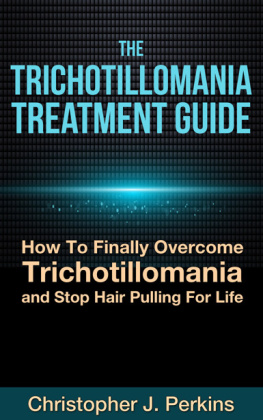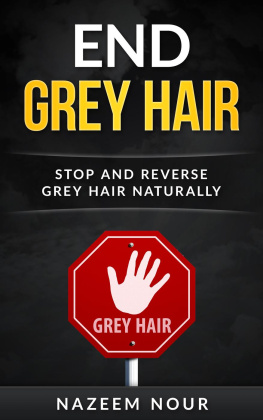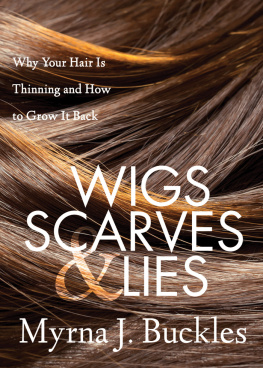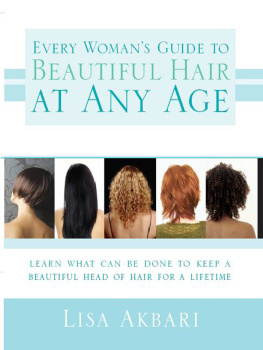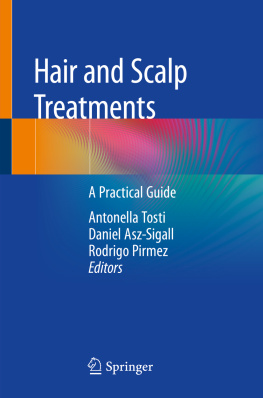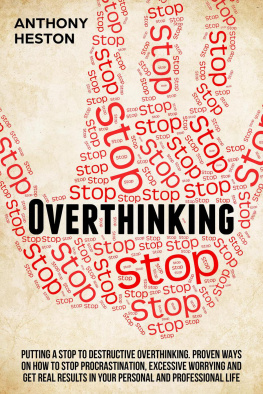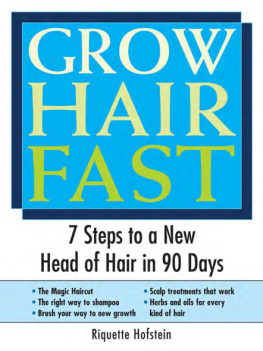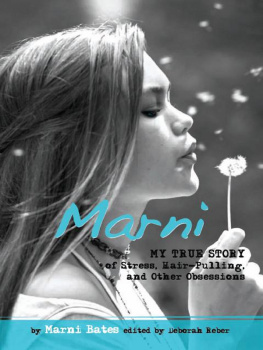Christopher J. Perkins - The Trichotillomania Treatment Guide: How To Finally Overcome Trichotillomania and Stop Hair Pulling For Life
Here you can read online Christopher J. Perkins - The Trichotillomania Treatment Guide: How To Finally Overcome Trichotillomania and Stop Hair Pulling For Life full text of the book (entire story) in english for free. Download pdf and epub, get meaning, cover and reviews about this ebook. year: 2016, publisher: Christopher J. Perkins, genre: Children. Description of the work, (preface) as well as reviews are available. Best literature library LitArk.com created for fans of good reading and offers a wide selection of genres:
Romance novel
Science fiction
Adventure
Detective
Science
History
Home and family
Prose
Art
Politics
Computer
Non-fiction
Religion
Business
Children
Humor
Choose a favorite category and find really read worthwhile books. Enjoy immersion in the world of imagination, feel the emotions of the characters or learn something new for yourself, make an fascinating discovery.
- Book:The Trichotillomania Treatment Guide: How To Finally Overcome Trichotillomania and Stop Hair Pulling For Life
- Author:
- Publisher:Christopher J. Perkins
- Genre:
- Year:2016
- Rating:4 / 5
- Favourites:Add to favourites
- Your mark:
The Trichotillomania Treatment Guide: How To Finally Overcome Trichotillomania and Stop Hair Pulling For Life: summary, description and annotation
We offer to read an annotation, description, summary or preface (depends on what the author of the book "The Trichotillomania Treatment Guide: How To Finally Overcome Trichotillomania and Stop Hair Pulling For Life" wrote himself). If you haven't found the necessary information about the book — write in the comments, we will try to find it.
Discover how to stop hair pulling for life !
If you have had enough of wearing hats to cover bald patches and feeling helpless or like you just cant stop plucking out your own hair, then this is the book for you. You will find a simple yet powerful guide to help your improve your life.
The Mayo Clinic defines trichotillomania as the impulse to and the actual follow through with the act of pulling out ones hair from ones own head, eyebrows and other body parts in an excessive manner. Such excessive behaviors can have negative impacts on a persons body, mind and social life, resulting in a reduced quality of life.
Thoroughly researched, this book is packed with information and proven steps and strategies on how to overcome trichotillomania. Covering topics including the disorders causes, diagnosis, treatments as well as the research which has been conducted, this book will provide you key information and tips for curing trichotillomania, especially in children!
People with this affliction try to resist these urges to pluck out their own body hair but all too often meet with little success in these efforts. This disorder varies in its level of severity from mild to severe, with the milder forms being easier to manage and live with. However, the more severe the disorder, the harder it is for the afflicted person to manage it. Accordingly, help is greatly needed and can be found within the pages of this book.
Here is a preview of what you will learn:
-> The clinical definition of trichotillomania is per the DSM-V of the American Psychiatric Association.
-> The differenced by focused trichotillomania and automated trichotillomania.
-> Causes and contributing factors which promote trichotillomania.
-> Researching findings regarding the origins and onset of this disorder.
-> The negative impact plucking out ones hair can have on a persons body, mind and overall quality of life.
-> What people do with the plucked out hairs.
-> The techniques which afflicted persons go to in order to cover the visual, physical and psychological effects of the plucking.
-> How trichotillomania impacts children whom are afflicted at a 7 times greater rate than adults!
-> Warning signs of trichotillomania in children and how to stop it.
This book will provide an in-depth explanation of trichotillomania, exploring its causes, how it can be properly diagnosed, summarizing much of the research which has been done on this disorder, and what treatments are available. Accordingly, this book will help you to gain a better understanding of trichotillomania and how to address this disorder, leading to an improved quality of life.
Learn how to stop trichotillomania for life!
Christopher J. Perkins: author's other books
Who wrote The Trichotillomania Treatment Guide: How To Finally Overcome Trichotillomania and Stop Hair Pulling For Life? Find out the surname, the name of the author of the book and a list of all author's works by series.

